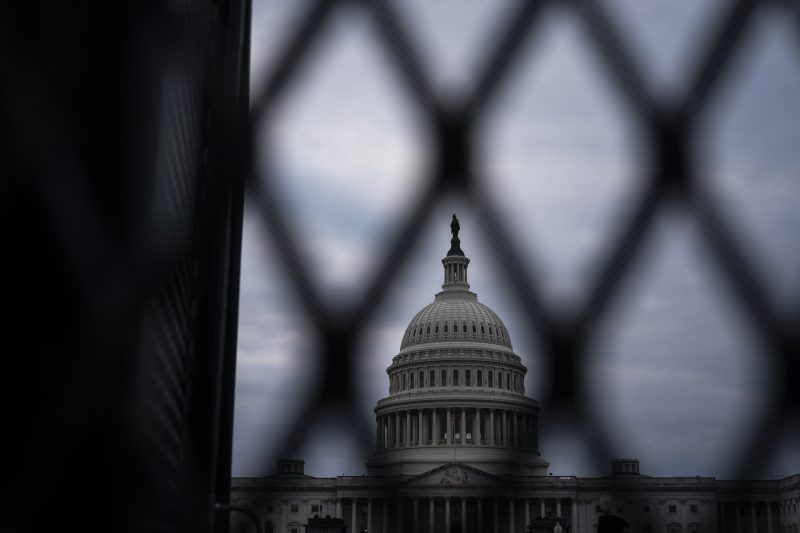The U.S. Capitol Police investigate thousands of possible threats on members of Congress and the Capitol each year. But the number of people who are prosecuted for such conduct is small: only 22 last year, out of more than more than 300 cases that investigators deemed worthy of referring to federal prosecutors for a look, according to statistics released by the Capitol Police.
Experts said the small number of prosecutions may be caused by a number of factors, such as limited federal resources, victims’ unwillingness to go through the criminal process, or the question of whether a perceived threat may qualify as protected speech under the First Amendment. The question of how to legally define a threat — from the sender’s perspective or the recipient’s? — has been decided differently among the federal circuit courts, and the U.S. Supreme Court is set to hear arguments this spring on a Facebook stalking case that may resolve the issue nationwide.
The number of possible threats on members of Congress examined by the Capitol Police’s Threat Assessment Section rose from about 4,000 in 2017 to more than 9,600 in 2021, then declined last year to 7,501. They include phone calls, letters and emails, voice mails and online postings referred to authorities — many of which Capitol Police said are “concerning” and are tracked, but do not meet the legal definition of threats.
In 2021, the department opened field offices in Florida and California, the two states where it received the most reports of possible threats. The department said its role in most cases is not necessarily prosecution, but often to refer people for mental health treatment.
After the Capitol Police looked into those 7,501 cases last year, its officers determined only 313 qualified as true threats, or about 4 percent. Those 313 cases were then sent to the U.S. attorney’s office in the area where the threat was believed to have been made.
Prosecutors moved forward on 22 of the 313 cases, or about 7 percent. The number and percentage of threat prosecutions has steadily declined in recent years, Capitol Police statistics show. There were 51 threats to members of Congress charged federally in 2019, about 13 percent of the cases referred. Ten percent were prosecuted in 2020, and 9 percent in 2021.
The Capitol Police responded to statistics requests from The Washington Post, but declined to comment further. After the attack on Paul Pelosi, husband of Rep. Nancy Pelosi (D-Calif.), in San Francisco last fall, Chief Tom Manger issued a statement saying his department monitored “potential threats before they make headlines.” Manger noted that about 12 percent of threat cases had been prosecuted over the previous five years and added, “We hope to see more of these cases prosecuted to the fullest extent of the law.”
In one recent case filed by the Justice Department, prosecutors allege a Longview, Wash., man left more than 400 voice mails for members of Congress, one of which said, “Well, so I’m gonna murder you. It is justified.” An Annapolis, Md., man pleaded guilty last month to leaving messages through the website for an event that a member of Congress was attending, saying, “Thank you for the address!!! I’m coming to murder all of you.” Both men face five-year maximum prison terms.
The Justice Department declined to comment for this story. Officials have in recent years sought to take a more aggressive posture on threat cases, and the department provided data indicating that it has increased prosecutions of cases beyond those involving members of Congress.
From 2012 to 2018, federal threat charges were filed in about 160 cases per year, according to Justice Department statistics. But in the past four years, the average number of threat charges has risen to more than 218 cases per year. The department said it does not track the percentage of referrals from law enforcement agencies over possible threats over which it brings prosecutions. In 2021, the Justice Department launched an Election Threats Task Force to respond to threats made to local election officials and poll workers.
The decision to charge is more complicated than it looks, said Mary McCord, a former Justice Department national security official during the Obama administration and legal counsel to the House of Representatives Capitol Security Review task force, which was formed after the Jan. 6 attacks.
McCord said federal prosecutors around the country must understand “what a pervasive problem this has become,” with increasing threats not only to Congress but to other elected officials and those who run elections nationwide. “The more you do not respond” to the threats, McCord said, “the more you embolden people to engage in the same behavior.”
But hurdles include spending time and federal resources on nonviolent cases, tracking down threats made anonymously, and analyzing whether a person truly had the capacity to act on their threat, McCord said. When she worked in the U.S. attorney’s office in D.C., McCord said, a prosecutor was on call 24 hours a day to begin handling possible threat cases, but she said members of Congress, their staff or other targets often were not interested in repeatedly going to court to testify against someone.
McCord said local FBI agents and prosecutors doing their own investigation after the Capitol Police submit the case may find problems in presenting a “super-tight case,” which federal prosecutors prefer.
Another significant problem for prosecutors is the standard for charging someone with making a threat, which differs from state to state and among the federal circuits. “What intent do you have to show?” McCord asked. “Did the person intend a threat, or did the recipient perceive a threat?”
In many states, and 10 federal circuits, the standard for a threat is “how reasonable people would interpret the speaker’s words,” but in other states and two federal circuits the standard is “proof that the speaker intended the statement as a threat,” according to a U.S. Supreme Court brief filed in the case of Counterman v. Colorado.
The case involves the thousands, and possibly millions, of Facebook messages that Billy Ray Counterman sent over several years to singer-songwriter Coles Whalen in the Denver area. Whalen tried to block Counterman but the messages kept coming, and Whalen became terrified of performing in public, according to court records. Counterman ultimately was charged with stalking Whalen, for messages such as “You’re not being good for human relations. Die. Don’t need you,” and “F— off permanently.” A jury convicted Counterman and he was sentenced to 4½ years in prison.
Counterman’s lawyers asked the Supreme Court to hear the case, arguing that “modern media allow statements intended for one particular audience to be viewed by people who are unfamiliar with the context and thus may interpret the statements differently than the speaker intended.” The Supreme Court accepted the case, and oral arguments are set for April.



























